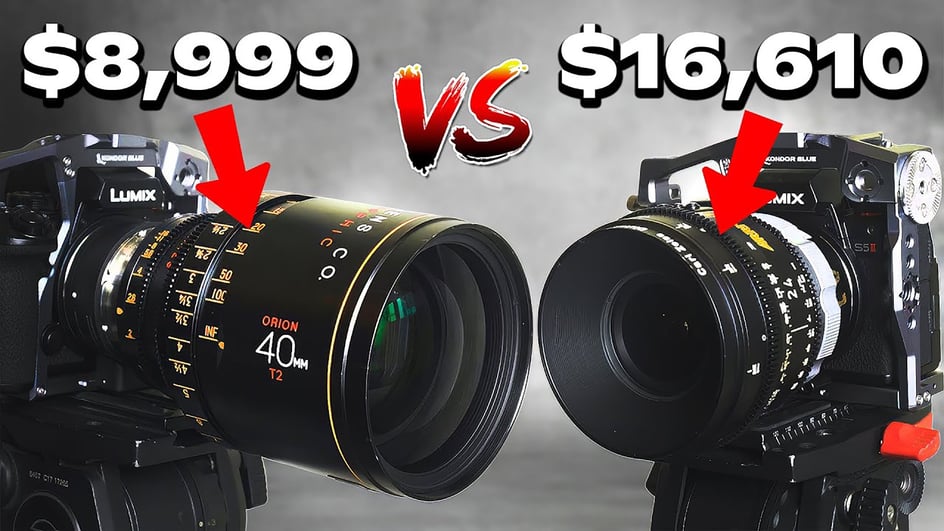
Feb 24, 2023
When starting out on any video project big or small, there’s a million decisions a filmmaker or creator must make. From deciding on the right script, to the right camera, to the right music for the edit, there’s a million avenues to explore.
And while there are rarely ever any right or wrong answers for a film or project, there are certainly important decisions which can shape the overall tone, style, and look of a project — as well as define whether or not your project will be successful to your overall goals.
While we here at Soundstripe have you covered on the music side with our royalty free audio library, there are some important factors to discuss when it comes to cinematography and deciding which types of lenses to use for your video.
Let’s look at two of the most popular high-end lens options which many cinematographers like to use these days as we compare and contrast the differences between anamorphic and spherical lenses — and explore how you can use them to frame up your own shots.
The difference between anamorphic and spherical lenses
As you can see in the video above, the YouTube team at Soundstripe decided to make a fun competition out of trying to discern which clips were shot by each lens type. To keep things fair, this test was obviously heavily-edited to make the videos look as similar as possible, but it should be interesting to see how our hosts do in trying to discern the unique differences between the two.
In general though, anamorphic and spherical lenses are indeed quite different. Spherical lenses, which have existed since the earliest days of film and photo, are designed to replicate the human eye (which is also spherical). Spherical lenses are the more true representation of what we’re seeing behind the camera, and the overall look is more realized and natural.
Anamorphic lenses, on the other hand, are a newer innovation in the grand scheme of things. They work by capturing a compressed version of the image in front of them, which then require stretching in post-production for them to be properly displayed to the audience. They’re also quite useful for larger format and resolutions as they reduce grain and are softer around the edges.
A study of anamorphic lenses and spherical lenses
What makes videos like this so fun to create is simply the exploration (and celebration) into what makes each of these lens types useful and popular. For this study in particular, the team used the Atlas Orion 40mm for their anamorphic lens (which retails at around $8,999) and the ARRI 24mm Ultra Prime (which retails at around $16,610) — both courtesy of Contrast Cine in Nashville, Tennessee.
While, of course, different in the ways covered above, they’re both super high-quality lenses which are used quite often on all variety of shoot types from music videos to commercial spots to indie and feature films.
And, as the guys discover in their contest, the subtleties of what makes each lens unique can still be sussed out even when there’s been a good bit of editing, stretching, and color grading done to make them look similar.
In particular, the biggest tells came down to looking at the bokeh, sharpness, and chromatin aberration which you can see in the outlines of the shadows and corners. To keep the contest competitive, the guys decided not to use too many light flares as those would give away the biggest discernible differences.
Spherical lenses often create bokeh that looks circular (or spherical) in the out-of-focus elements and flairs. Whereas anamorphic lenses have their recognizable oval-shape bokeh which look classically cinematic and are softer around the edges.
Are anamorphic or spherical lenses right for you?
Ultimately though, at the end of the day, there might not be an exact right answer as to which lens is better overall. Obviously each has its own benefits and drawbacks, but most importantly, they’re designed for different looks which work best for different projects and styles.
Our resident DP at Soundstripe, Chris Haggerty, puts it best perhaps when he says you should always have a reason for using the lenses you’re using on a project. For example, if you’re shooting documentary or in that style, you might want spherical lenses to better reflect the realism of what you’re capturing and displaying to your audience.
Whereas, if you’re shooting commercial or creative projects, which you want to feel like big spectacle-laced cinema, you might want to go with anamorphic to really get that golden age of Hollywood look and feel.
Wrapping up anamorphic lens vs spherical lens options
At the end of the day though, deciding between using anamorphic lenses or spherical lenses is really going to come down to what you're looking for and what you can get your hands on. A lot of filmmakers try to find vintage anamorphic lenses and hold on to them for certain projects that require a wider aspect ratio.
You'll also find plenty of DPs who like how spherical lenses project images for use in post and can work better with different aspect ratios. Perhaps the best test you can do yourself is to work with some lens flares and see what anamorphic lenses produce versus what you see with the equivalent spherical lenses options.
Again though, there are no right or wrong answers, so feel free to have fun exploring the difference between anamorphic and spherical lenses on your own.